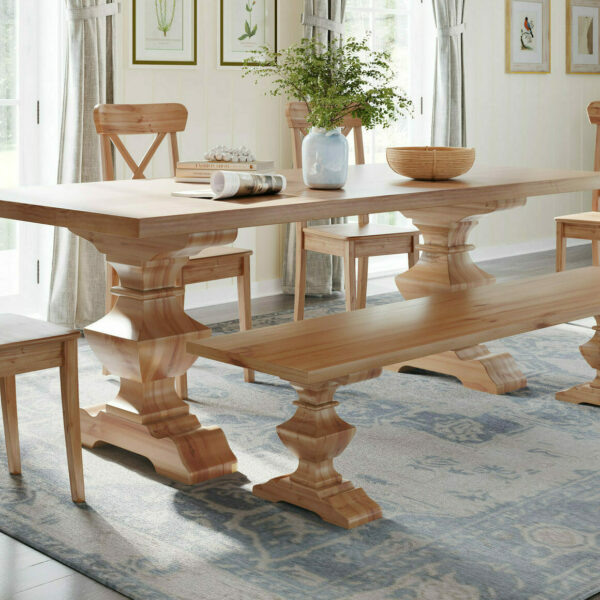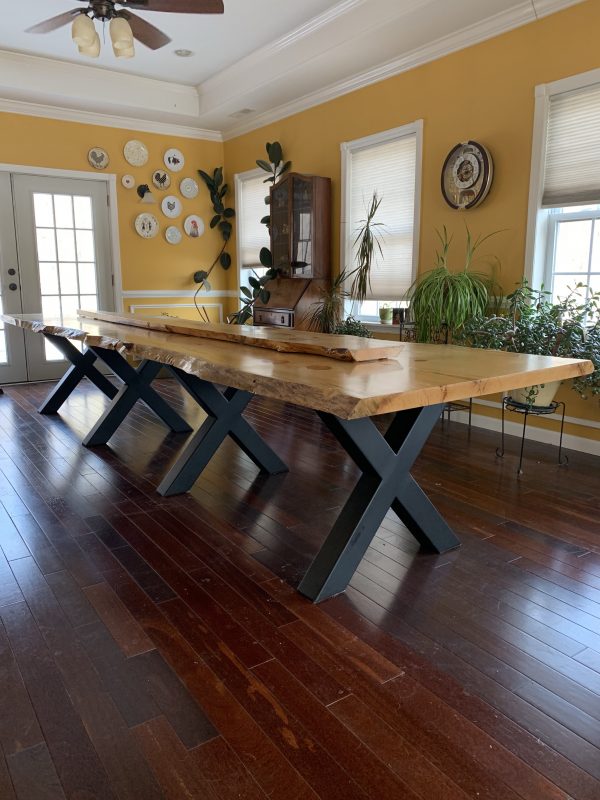Why Custom Dining Room Table Legs Are Worth the Investment
Why Custom Dining Room Table Legs Are Worth the Investment
Blog Article
From Traditional to Modern: Discover the Suitable Dining-room Table Legs for Your Design
While classic designs such as cabriole and transformed legs stimulate a feeling of timeless elegance, contemporary designs like barrette and geometric alternatives present a chance for striking aesthetic passion. As you think about these elements, the concern stays: just how can you seamlessly incorporate these diverse leg designs to develop a harmonious eating experience?
Comprehending Table Leg Styles
The selection of eating area table leg designs can substantially influence both the appearances and performance of the room. Each leg style adds special functional attributes and aesthetic elements, providing to varied layout preferences and usage demands. Recognizing these designs is vital for picking the right eating table that lines up with your total interior style vision.
As an example, conical legs offer a clean, timeless appearance that can enhance an area's sophistication, while stand bases supply security and make best use of legroom, making them excellent for smaller rooms. Hairpin legs, a hallmark of mid-century modern layout, present a commercial panache, permitting a ventilated, open feel. Trestle legs stimulate rustic appeal, supplying durable assistance and a feeling of timelessness.
Additionally, the selection of products plays a significant role. Wooden legs can bring heat and appearance, whereas metal alternatives frequently communicate a sleek, modern vibe. Eventually, understanding table leg designs is crucial for creating a natural eating area that reflects individual design while making sure functionality and convenience. By attentively considering these aspects, you can boost both the aesthetic and practical allure of your eating area.
Conventional Table Leg Options
When selecting dining-room table legs, traditional options often symbolize ageless sophistication and craftsmanship. These designs reflect a rich heritage and a commitment to top quality, making them perfect for those who value timeless aesthetics.
One of the most famous standard leg designs is the cabriole leg, identified by its graceful bent shape. This design commonly includes attractive makings and is most commonly located in Queen Anne and Chippendale furniture. One more popular choice is the turned leg, which boasts a series of smooth, rounded forms that provide a timeless appearance while maintaining stability.
Additionally, the straight leg, while straightforward, provides a sturdy and unadorned structure that can mix effortlessly with a selection of tabletop designs. For those drawn to ornate detailing, claw-and-ball feet legs stimulate a feeling of majesty and can serve as a magnificent focal factor in any kind of eating area.
Last but not least, pedestal bases, although not strictly legs, give an alternative conventional alternative that permits enough legroom and can be beautifully carved. Each of these standard leg designs adds to the general ambiance of a dining-room, weding feature with aesthetic charm.

Modern Table Leg Layouts
Modern table read what he said leg designs use a varied series of designs that stress cutting-edge products and clean lines. These styles frequently prioritize capability while serving as striking focal points within an eating space. Minimalist aesthetic appeals prevail, with legs crafted from products such as metal, glass, and crafted timber, which add to a contemporary and ventilated feel.
One prominent style is the barrette leg, characterized by its slender, tapered framework that supplies security without overwhelming the table top (dining room table legs). This design is often discovered in mid-century contemporary furniture and can easily match numerous dining table forms. Another trend is using geometric shapes, where legs might tackle angular or unbalanced types, including aesthetic passion and a touch of artistry

Mixing Styles for Special Spaces
Often, property owners seek to develop unique dining spaces that mirror their individual style by blending numerous style aspects. This strategy allows for the unification of diverse appearances, leading to a harmonious yet distinct atmosphere. Combining a rustic wood table with sleek, modern steel legs can produce an appealing contrast that raises the room's overall allure.
Additionally, integrating vintage table legs with contemporary tabletops can evoke a sense of history while keeping a modern-day sensibility. Such mixes not just display specific preference however likewise encourage creative thinking, allowing home owners to curate a space that feels both personal and inviting.
Shade plays an important role in this blending process; picking table legs that enhance or contrast with the existing color design can boost aesthetic rate of interest. Whitewashed legs can soften the daring of a dark table surface area, developing a well balanced visual.
Tips for Choosing the Right Legs
Choosing the right table legs is important for achieving both capability and visual charm in your dining room. Begin by thinking about the general style of your room. Typical settings gain from legs that include complex makings or turned styles, while modern spaces may require smooth, minimalist designs.
Next, evaluate the height and security of the legs. dining room table legs. Basic eating tables range in between 28 to 30 inches in height, so make sure the legs enhance this dimension for convenience. In addition, robust materials, such as hardwood or metal, can boost stability and long life
Evaluate the leg form as well-- options consist of straight, tapered, or pedestal layouts. Straight legs review supply a traditional look, while tapered legs can add a touch of elegance. Pedestal bases provide sufficient sites legroom and are ideal for smaller sized spaces.
Conclusion
In summary, selecting the ideal dining-room table legs needs mindful consideration of both typical and modern designs. Standard choices such as cabriole and transformed legs offer ageless sophistication, while modern-day designs like barrette and geometric forms supply a contemporary touch. By balancing leg style, height, and product with the overall décor, a natural and welcoming atmosphere can be achieved. Eventually, the picked table legs must show the desired visual, boosting the dining experience within the space.
The variety of eating area table leg designs can considerably affect both the aesthetics and functionality of the area. Inevitably, understanding table leg designs is essential for developing a cohesive eating location that mirrors individual design while ensuring practicality and comfort.One of the most renowned standard leg designs is the cabriole leg, defined by its stylish rounded shape. Straight legs offer a traditional appearance, while conical legs can add a touch of style.In recap, choosing the suitable eating room table legs needs careful consideration of both contemporary and standard styles.
Report this page